How to define and use Java arrays
1. Basic usage of arrays
1. What is an array
Array: A collection that stores a set of data of the same data type .
2. Define the array
int[]: int type array
double[]: double type array
Variables can be defined by type, such as :
int[] array, array is a variable of this type. This variable is a variable that stores a set of the same data.
Three ways to define arrays:

The first one:
int[] array = {1,2 ,3,4,5,6};Define an array and initialize it
Although new is not written, it is actually an object
Notes:
int[10] array = {1,2,3,4,5,6};Wrong writing, int[] belongs to type, no numbers can be added inside the square brackets, which is equivalent to destruction here its type.
Second type:
int[] array2 = new int[3];
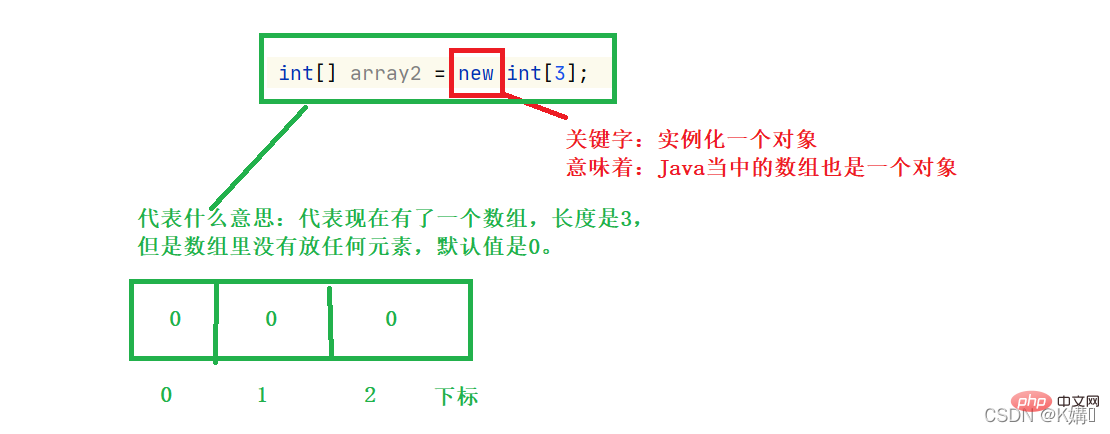
Define array Uninitialized
Third type:
int[] array3 = new int[]{1,2,3,4,5,6};
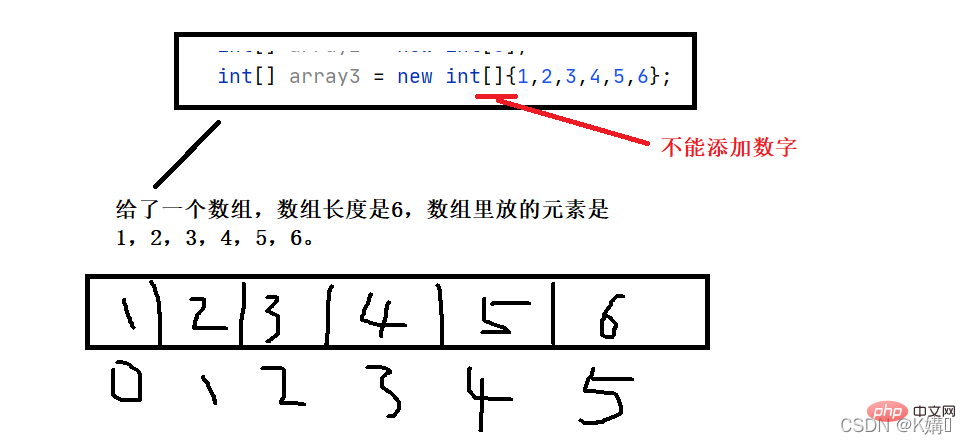
Definition and initialization
The most commonly used of the three is the first one
3. Use of arrays
Get Array length:

In Java, you can directly find the length of the current array through the array name array.length
Access array elements:

Access the element with index 4 in the array
Access the array element out of bounds:

The Java language directly reports an error when out of bounds
Change array elements:
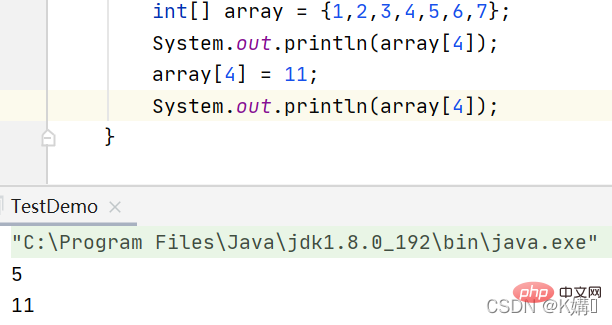
By placing brackets in the array name, you can not only access the content of the subscript, but also write some data into the subscript
Print array:
The first type: (for loop)
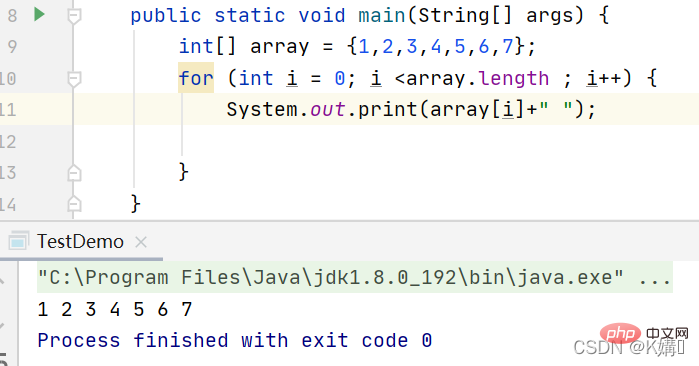
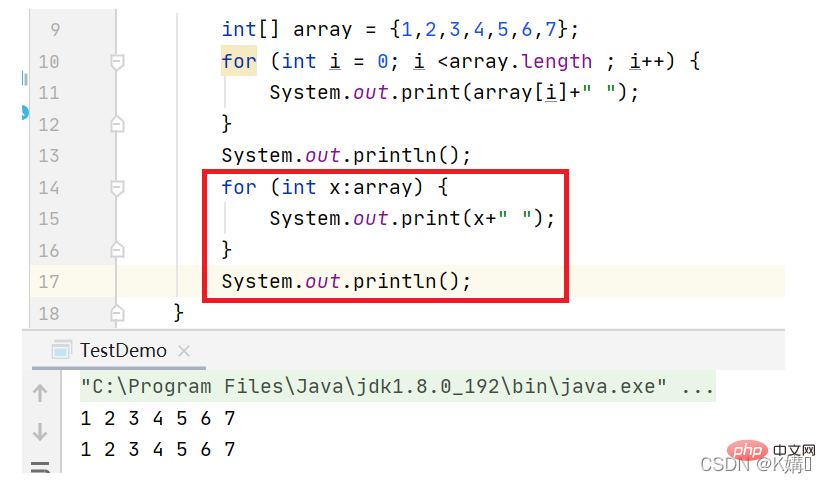
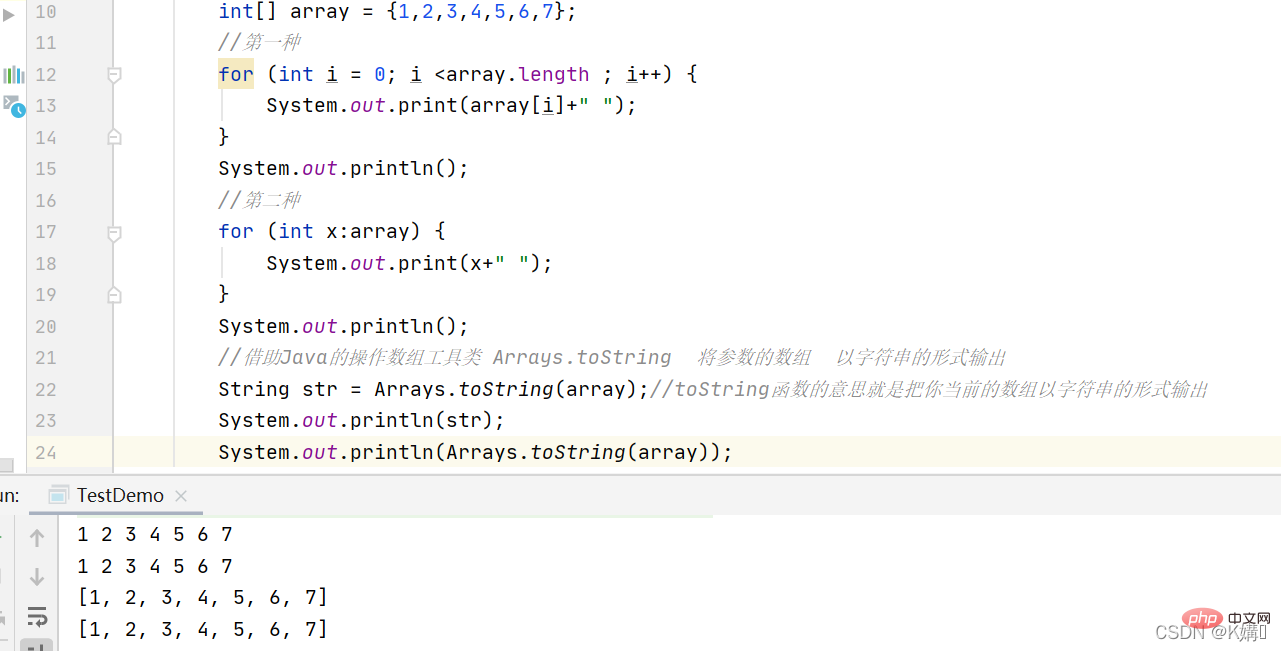
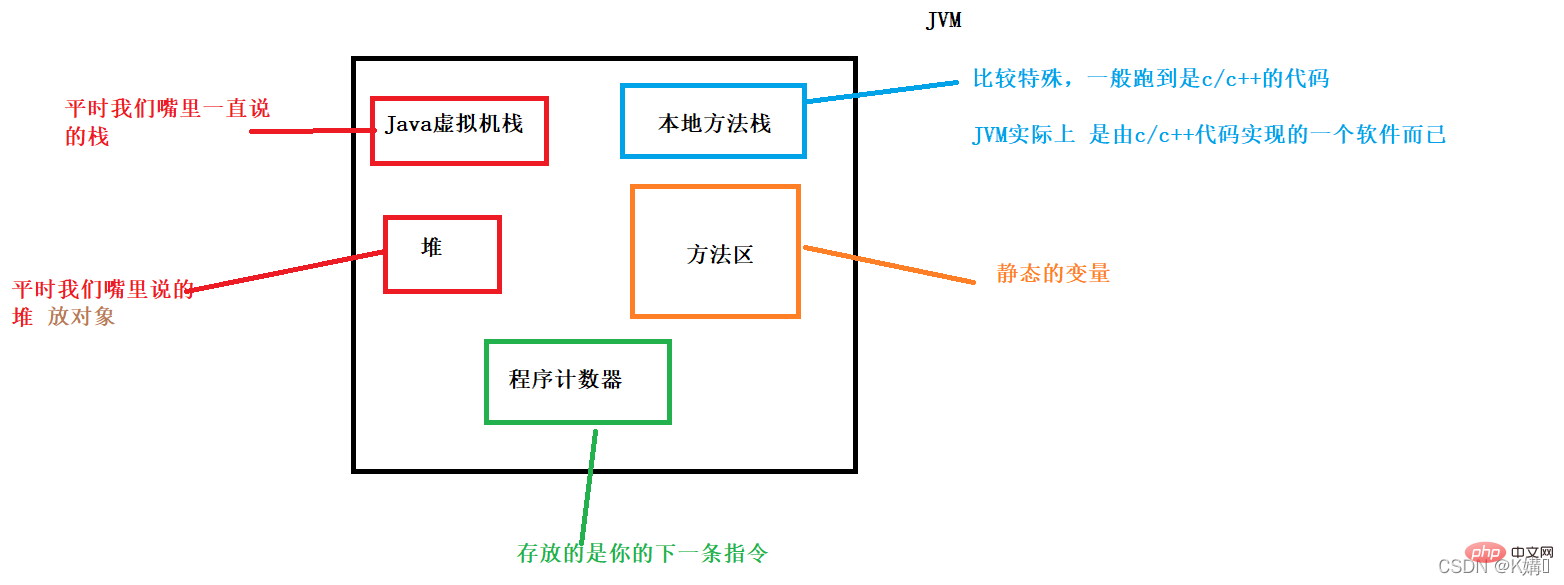

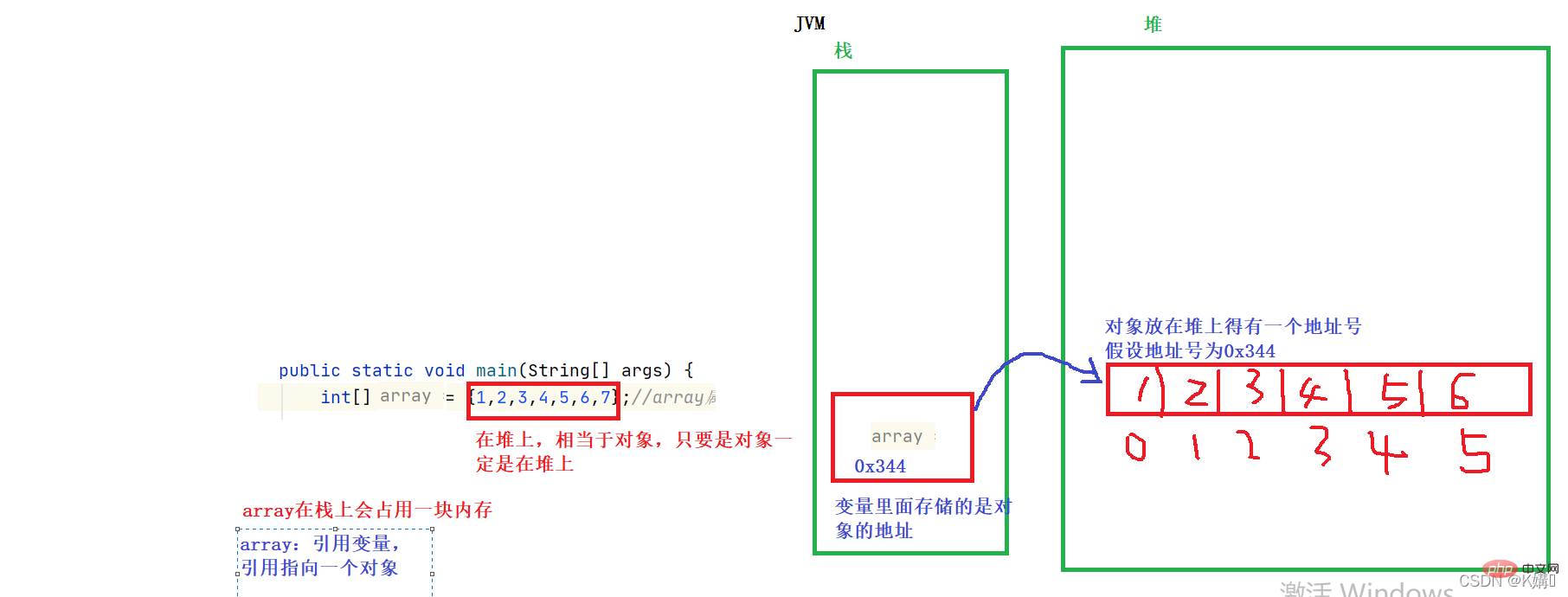



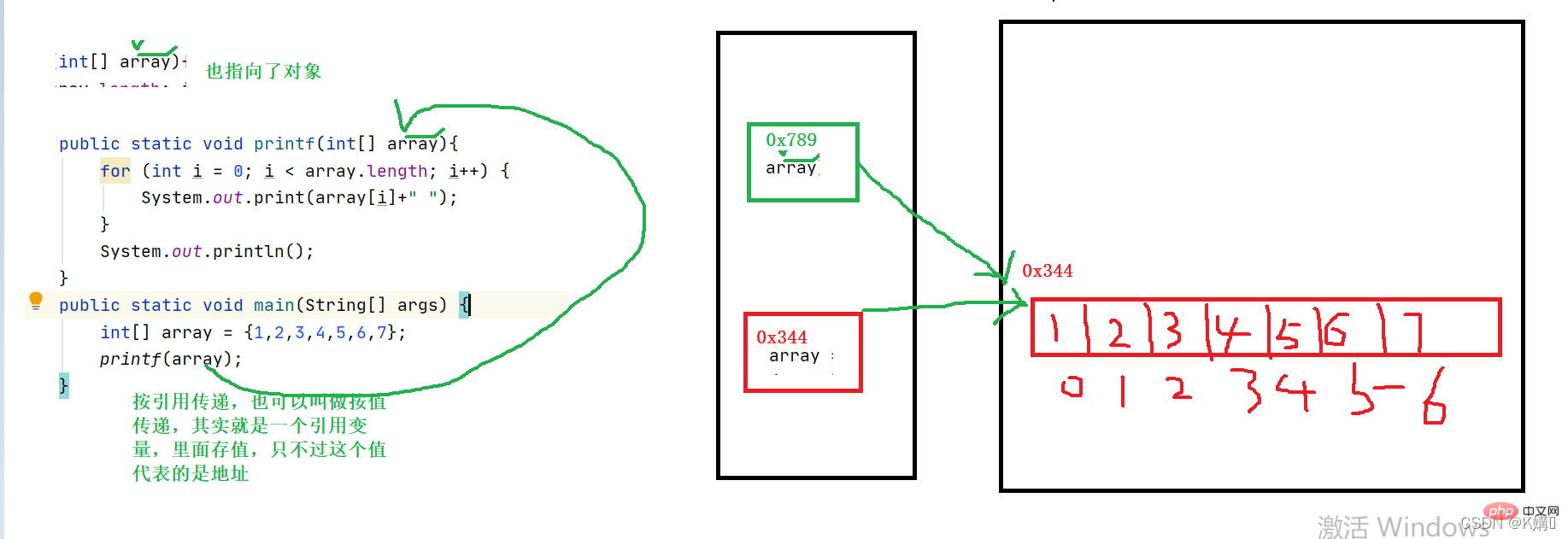
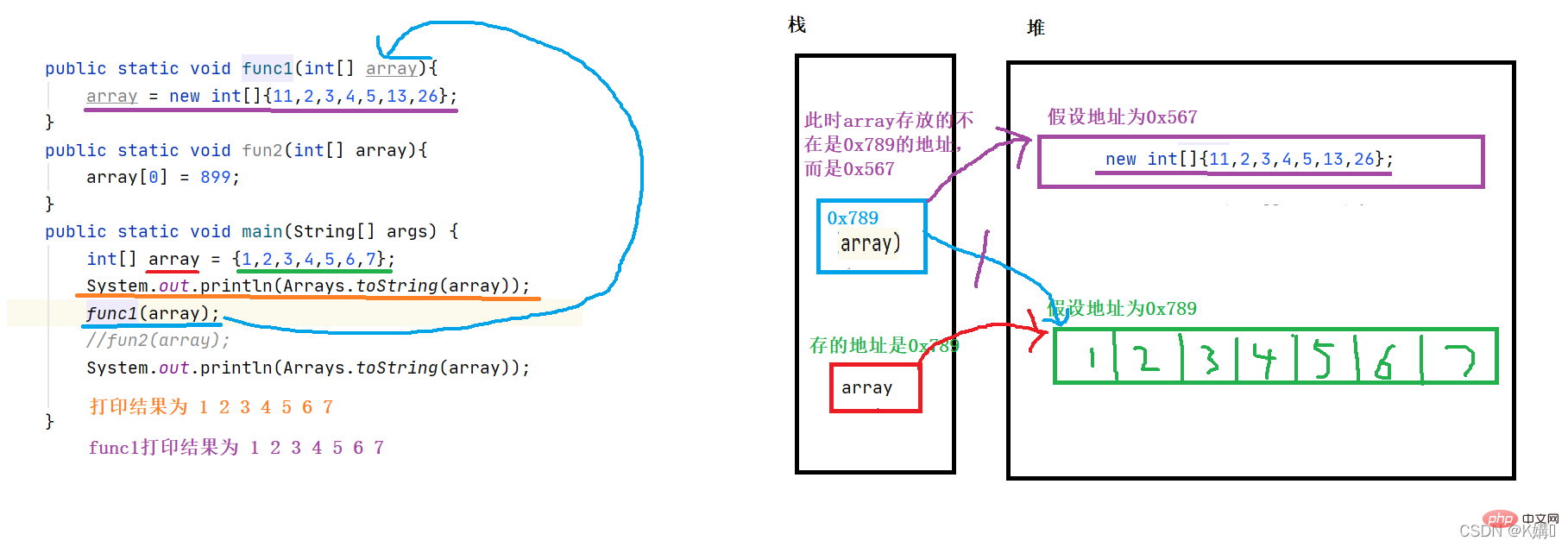
 ##Analysis example: What does the picture below represent
##Analysis example: What does the picture below represent

represents the reference of array2, pointing to the object pointed to by the reference of array1.
The following picture represents the meaning of the above example:
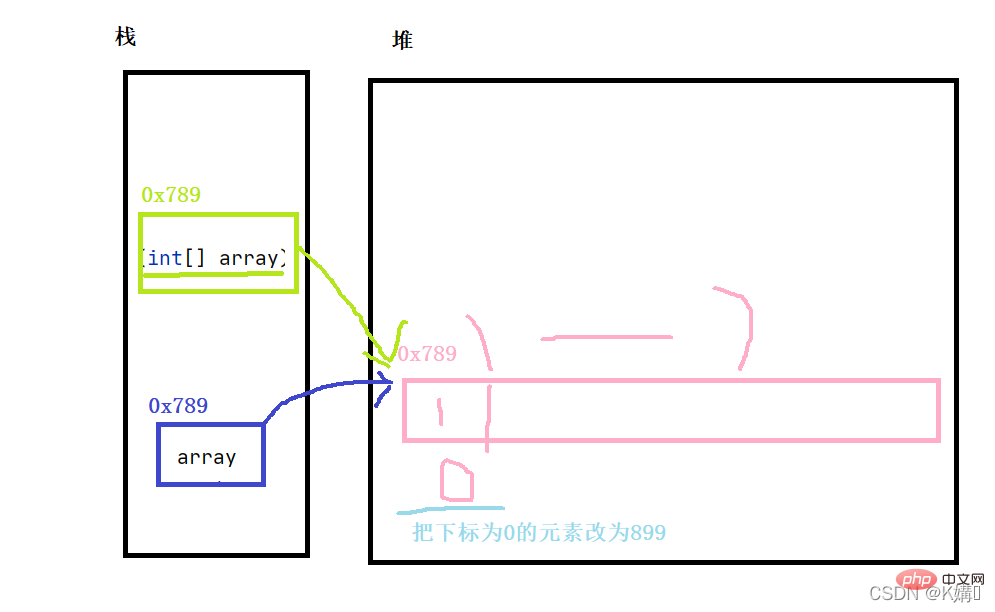
Note:
The quote points to the quote. This sentence is wrong. References can only point to objects
Does the reference have to be on the stack?
Not necessarily. Whether a variable is on the stack is determined by the nature of your variable. If it is a local variable, it must be on the stack. If not, for example, instance member variables are not necessarily on the stack.
3. Array exercises
1. Exchange the values of two variables
1 2 3 4 5 6 7 8 9 10 11 12 13 |
|
Print results:
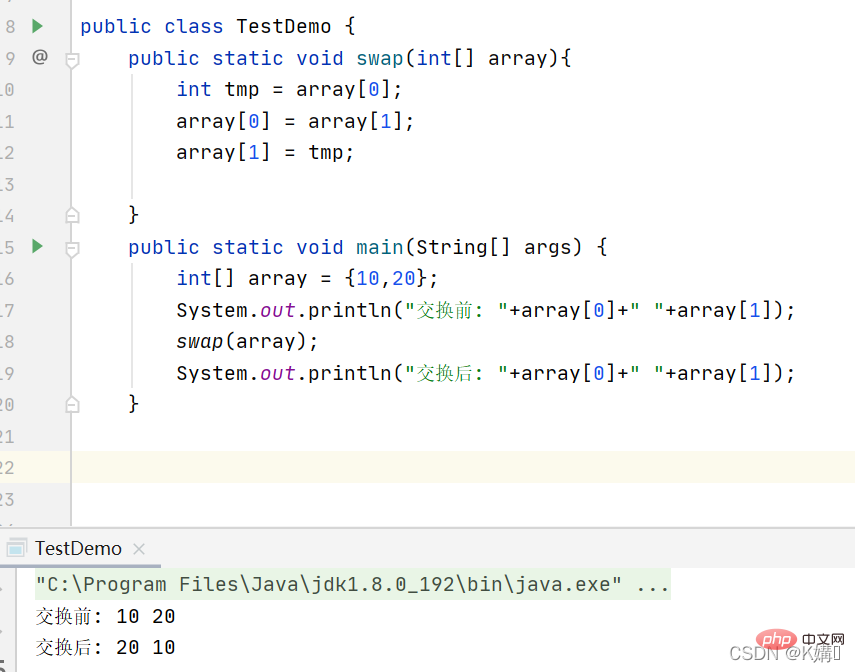
2. Write a method to * 2
1 2 3 4 5 6 7 8 9 10 11 12 13 14 15 16 |
|
Print the result of each element in the array:
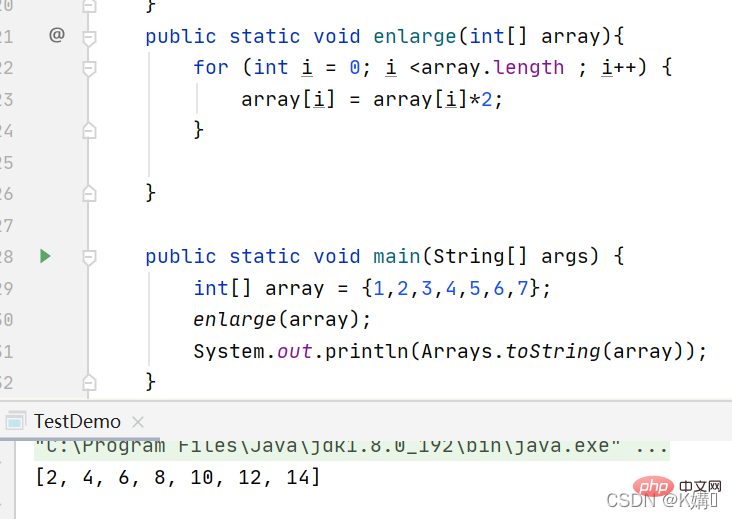
Enlarge the original array by twice the value In a new array
1 2 3 4 5 6 7 8 9 10 11 12 13 14 15 16 17 18 |
|
3. Simulate the implementation of the tostring function
1 2 3 4 5 6 7 8 9 10 11 12 13 14 15 16 17 18 |
|
Print the result:

4. Find the Maximum element
1 2 3 4 5 6 7 8 9 10 11 12 13 14 15 16 17 18 |
|
Print result:
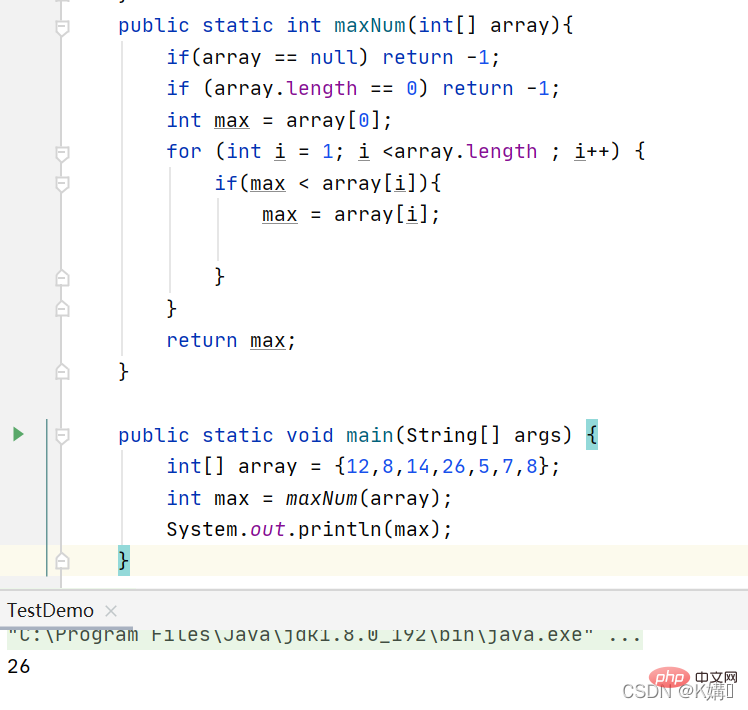
5. Find the specified element in the array (sequential search)
1 2 3 4 5 6 7 8 9 10 11 12 13 14 |
|
Print result:
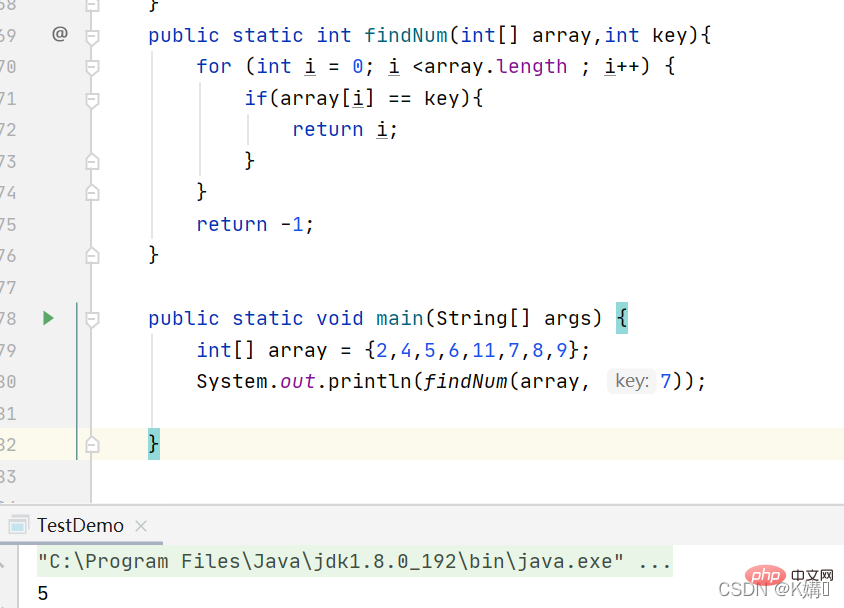
6. Find the specified element in the array (binary search)
1 2 3 4 5 6 7 8 9 10 11 12 13 14 15 16 17 18 19 20 21 22 |
|
Print result:

The above is the detailed content of How to define and use Java arrays. For more information, please follow other related articles on the PHP Chinese website!

Hot AI Tools

Undresser.AI Undress
AI-powered app for creating realistic nude photos

AI Clothes Remover
Online AI tool for removing clothes from photos.

Undress AI Tool
Undress images for free

Clothoff.io
AI clothes remover

Video Face Swap
Swap faces in any video effortlessly with our completely free AI face swap tool!

Hot Article

Hot Tools

Notepad++7.3.1
Easy-to-use and free code editor

SublimeText3 Chinese version
Chinese version, very easy to use

Zend Studio 13.0.1
Powerful PHP integrated development environment

Dreamweaver CS6
Visual web development tools

SublimeText3 Mac version
God-level code editing software (SublimeText3)

Hot Topics
 1663
1663
 14
14
 1420
1420
 52
52
 1313
1313
 25
25
 1266
1266
 29
29
 1239
1239
 24
24
 Break or return from Java 8 stream forEach?
Feb 07, 2025 pm 12:09 PM
Break or return from Java 8 stream forEach?
Feb 07, 2025 pm 12:09 PM
Java 8 introduces the Stream API, providing a powerful and expressive way to process data collections. However, a common question when using Stream is: How to break or return from a forEach operation? Traditional loops allow for early interruption or return, but Stream's forEach method does not directly support this method. This article will explain the reasons and explore alternative methods for implementing premature termination in Stream processing systems. Further reading: Java Stream API improvements Understand Stream forEach The forEach method is a terminal operation that performs one operation on each element in the Stream. Its design intention is
 PHP: A Key Language for Web Development
Apr 13, 2025 am 12:08 AM
PHP: A Key Language for Web Development
Apr 13, 2025 am 12:08 AM
PHP is a scripting language widely used on the server side, especially suitable for web development. 1.PHP can embed HTML, process HTTP requests and responses, and supports a variety of databases. 2.PHP is used to generate dynamic web content, process form data, access databases, etc., with strong community support and open source resources. 3. PHP is an interpreted language, and the execution process includes lexical analysis, grammatical analysis, compilation and execution. 4.PHP can be combined with MySQL for advanced applications such as user registration systems. 5. When debugging PHP, you can use functions such as error_reporting() and var_dump(). 6. Optimize PHP code to use caching mechanisms, optimize database queries and use built-in functions. 7
 PHP vs. Python: Understanding the Differences
Apr 11, 2025 am 12:15 AM
PHP vs. Python: Understanding the Differences
Apr 11, 2025 am 12:15 AM
PHP and Python each have their own advantages, and the choice should be based on project requirements. 1.PHP is suitable for web development, with simple syntax and high execution efficiency. 2. Python is suitable for data science and machine learning, with concise syntax and rich libraries.
 PHP vs. Other Languages: A Comparison
Apr 13, 2025 am 12:19 AM
PHP vs. Other Languages: A Comparison
Apr 13, 2025 am 12:19 AM
PHP is suitable for web development, especially in rapid development and processing dynamic content, but is not good at data science and enterprise-level applications. Compared with Python, PHP has more advantages in web development, but is not as good as Python in the field of data science; compared with Java, PHP performs worse in enterprise-level applications, but is more flexible in web development; compared with JavaScript, PHP is more concise in back-end development, but is not as good as JavaScript in front-end development.
 PHP vs. Python: Core Features and Functionality
Apr 13, 2025 am 12:16 AM
PHP vs. Python: Core Features and Functionality
Apr 13, 2025 am 12:16 AM
PHP and Python each have their own advantages and are suitable for different scenarios. 1.PHP is suitable for web development and provides built-in web servers and rich function libraries. 2. Python is suitable for data science and machine learning, with concise syntax and a powerful standard library. When choosing, it should be decided based on project requirements.
 PHP's Impact: Web Development and Beyond
Apr 18, 2025 am 12:10 AM
PHP's Impact: Web Development and Beyond
Apr 18, 2025 am 12:10 AM
PHPhassignificantlyimpactedwebdevelopmentandextendsbeyondit.1)ItpowersmajorplatformslikeWordPressandexcelsindatabaseinteractions.2)PHP'sadaptabilityallowsittoscaleforlargeapplicationsusingframeworkslikeLaravel.3)Beyondweb,PHPisusedincommand-linescrip
 Java Program to Find the Volume of Capsule
Feb 07, 2025 am 11:37 AM
Java Program to Find the Volume of Capsule
Feb 07, 2025 am 11:37 AM
Capsules are three-dimensional geometric figures, composed of a cylinder and a hemisphere at both ends. The volume of the capsule can be calculated by adding the volume of the cylinder and the volume of the hemisphere at both ends. This tutorial will discuss how to calculate the volume of a given capsule in Java using different methods. Capsule volume formula The formula for capsule volume is as follows: Capsule volume = Cylindrical volume Volume Two hemisphere volume in, r: The radius of the hemisphere. h: The height of the cylinder (excluding the hemisphere). Example 1 enter Radius = 5 units Height = 10 units Output Volume = 1570.8 cubic units explain Calculate volume using formula: Volume = π × r2 × h (4
 PHP: The Foundation of Many Websites
Apr 13, 2025 am 12:07 AM
PHP: The Foundation of Many Websites
Apr 13, 2025 am 12:07 AM
The reasons why PHP is the preferred technology stack for many websites include its ease of use, strong community support, and widespread use. 1) Easy to learn and use, suitable for beginners. 2) Have a huge developer community and rich resources. 3) Widely used in WordPress, Drupal and other platforms. 4) Integrate tightly with web servers to simplify development deployment.




